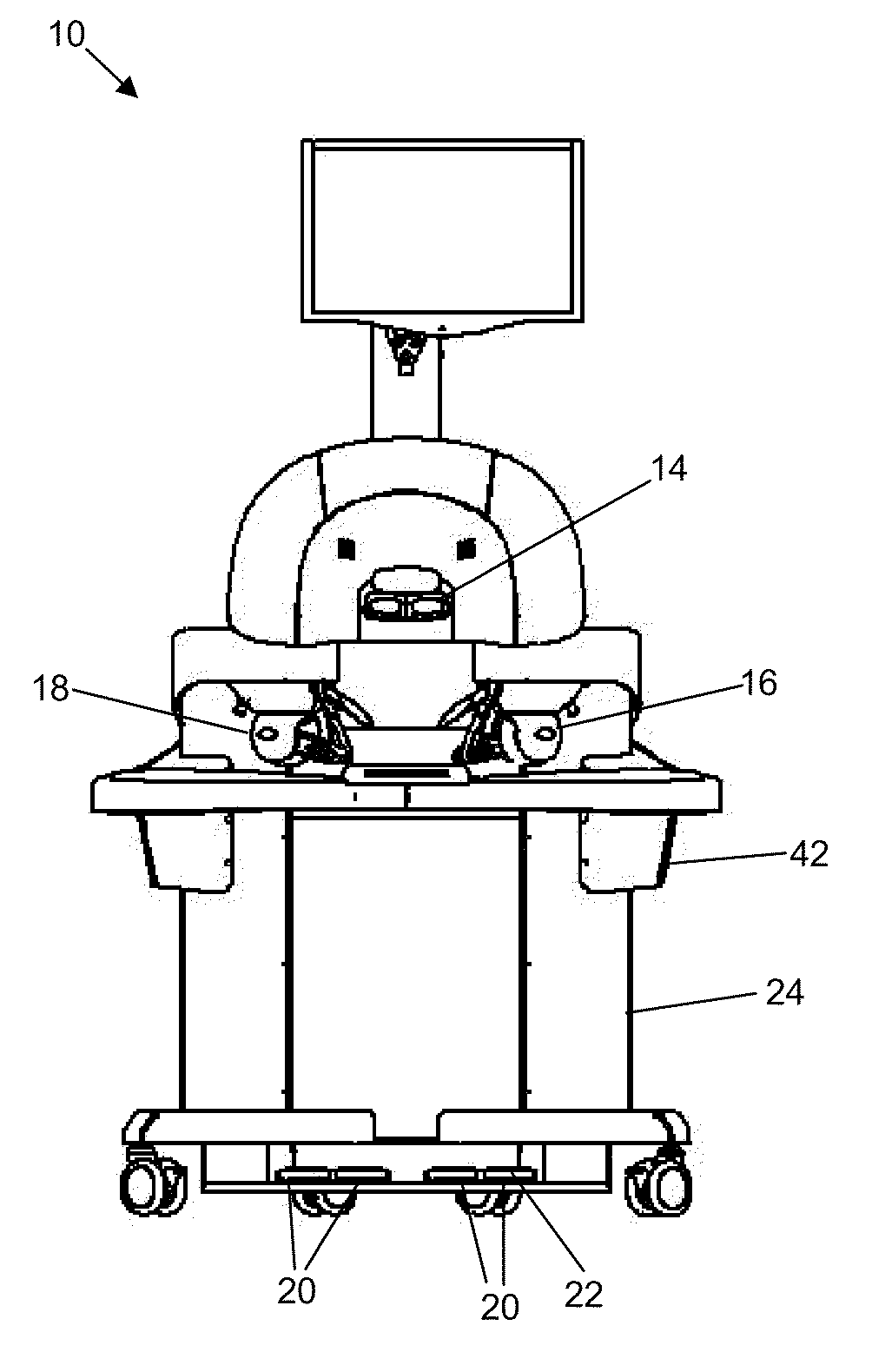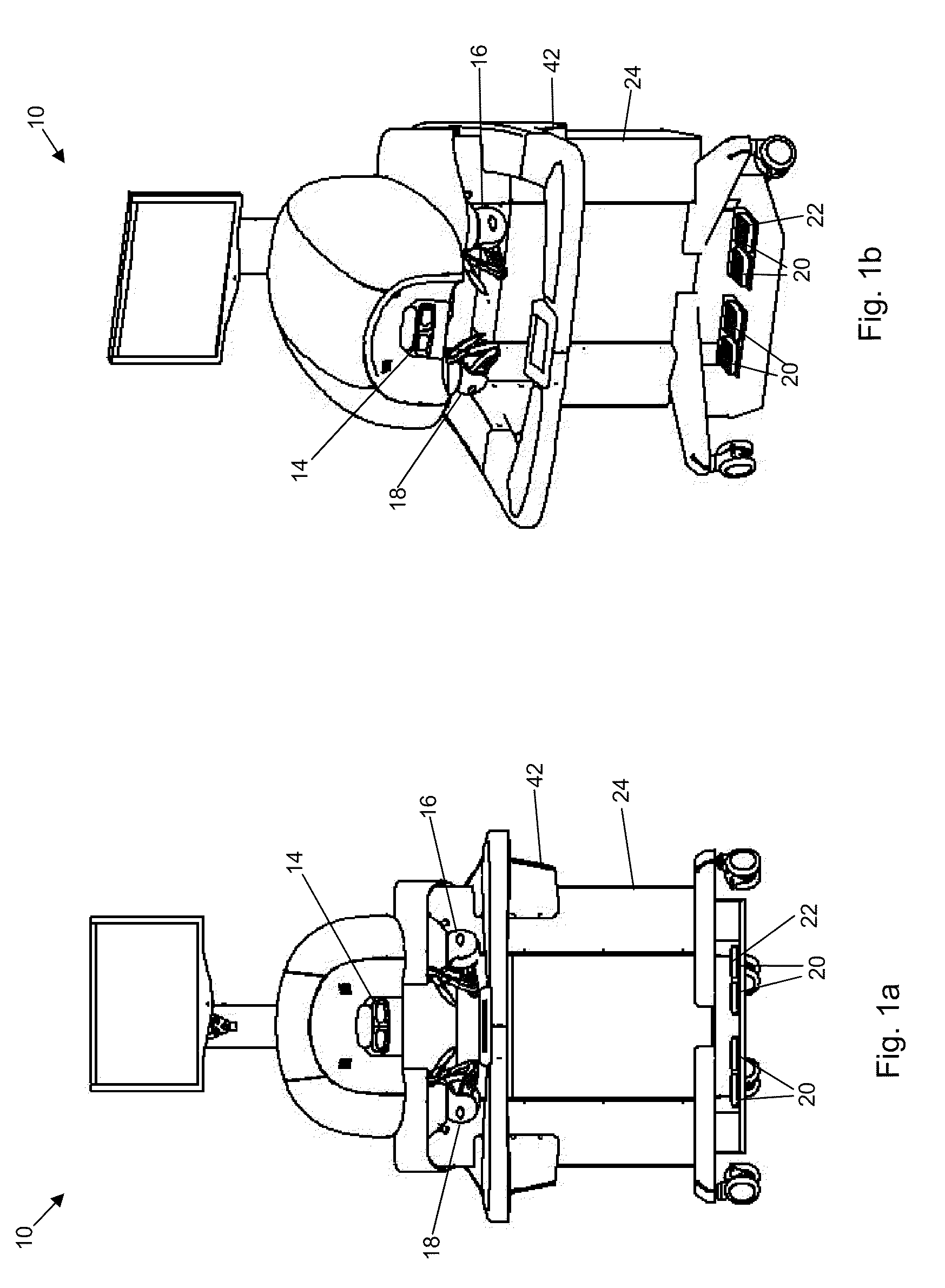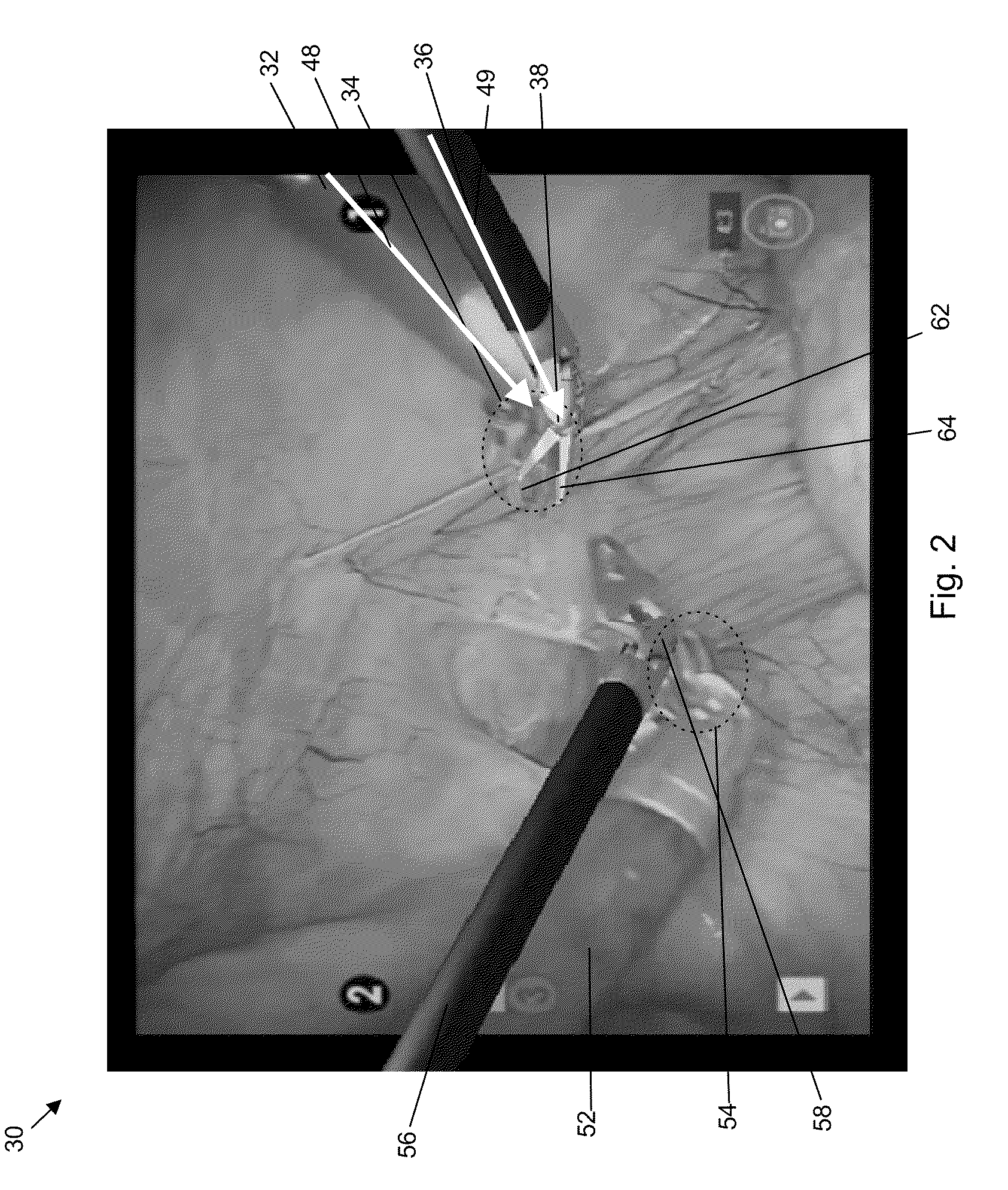Method And System For Minimally-Invasive Surgery Training
a minimally invasive surgery and training technology, applied in the field of surgical training, can solve the problems of poor image quality, lack of visual feedback, and the influence of images received from the endoscope by a number of factors
- Summary
- Abstract
- Description
- Claims
- Application Information
AI Technical Summary
Problems solved by technology
Method used
Image
Examples
Embodiment Construction
[0029]The present invention may be embodied as a method 100 of minimally-invasive surgery (“MIS”) training (see FIG. 5). A simulator 10 is provided 103, the simulator 10 having a display 14, a computer 24, and a first input device 16. The first input device 16 may be selected to best recreate the motion of an actual surgical device. In a non-limiting example, a six degree-of-freedom device (such as a Phantom Omni®) may be selected as the first input device 16 to recreate the motion an input of a da Vinci® Surgical System (“DVSS”). One example of a suitable simulator 10, the Robotic Surgical Simulator (“RoSS™”) from Simulated Surgical Systems LLC is depicted in FIG. 1, although it should be understood that other simulators may be used.
[0030]A video 30 of an MIS is displayed 106 on the display 14. The video 30 shows an MIS in progress and a first surgical tool 32 is visible in at least a portion of the video 30 (see, e.g., FIGS. 2 and 3). In one example, the video 30 may show a prosta...
PUM
 Login to view more
Login to view more Abstract
Description
Claims
Application Information
 Login to view more
Login to view more - R&D Engineer
- R&D Manager
- IP Professional
- Industry Leading Data Capabilities
- Powerful AI technology
- Patent DNA Extraction
Browse by: Latest US Patents, China's latest patents, Technical Efficacy Thesaurus, Application Domain, Technology Topic.
© 2024 PatSnap. All rights reserved.Legal|Privacy policy|Modern Slavery Act Transparency Statement|Sitemap



